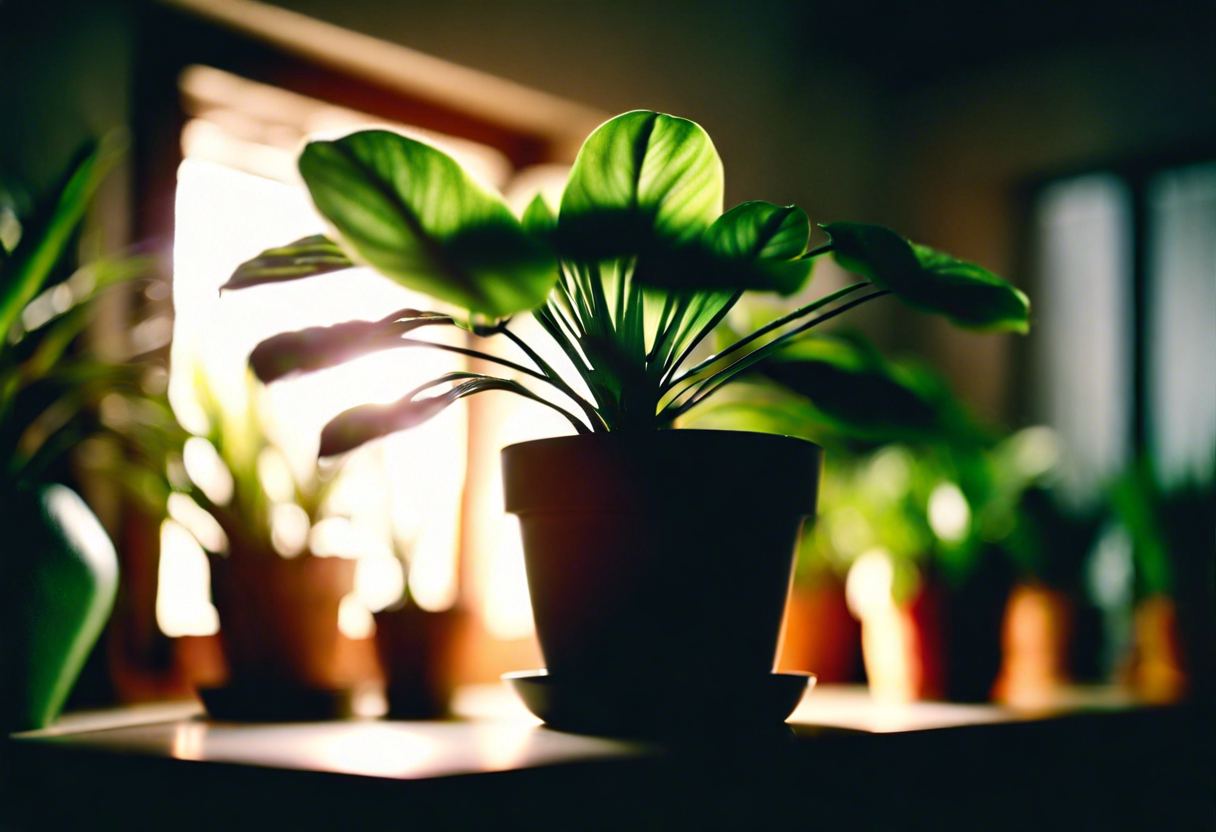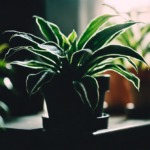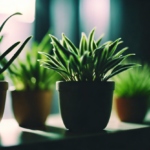Best Indoor Plants That Thrive in Low Light Conditions
When it comes to indoor plants, finding the right ones for low light conditions can be a challenge. Many plants require plenty of sunlight to thrive, but let’s not despair. There are a variety of beautiful and resilient plants that can still flourish in rooms with limited natural light. Here, we will explore some of the best indoor plants that are well-suited to low light environments.
Snake Plant (Sansevieria Trifasciata)
The Snake Plant, also known as Mother-in-Law’s Tongue, is a popular choice for low light areas. It has tall, upright leaves that come in various shades of green and yellow. This plant is exceptionally hardy and can survive in almost any indoor setting. Snake plants also have air-purifying qualities, making them a perfect addition to your home or office.
Pothos (Epipremnum Aureum)
Pothos, also referred to as Devil’s Ivy, is another great option for low light conditions. This trailing vine has heart-shaped leaves that come in various shades of green. Pothos is extremely tolerant of low light levels and requires minimal care, making it an excellent choice for beginners or those with busy lifestyles.
ZZ Plant (Zamioculcas Zamiifolia)
The ZZ Plant is an ideal choice for those seeking a low-maintenance plant that can survive in low light environments. Its glossy, dark green leaves retain moisture, allowing it to thrive even with infrequent watering. The ZZ Plant adds a touch of elegance and beauty to any space while necessitating minimal care.
Dracaena (Dracaena spp.)
With its vibrant foliage, the Dracaena is an eye-catching indoor plant that can survive in low light conditions. There are many different varieties of Dracaena to choose from, each offering unique leaf colors and patterns. This plant is known for its air-purifying qualities and is an excellent choice for enhancing the aesthetic appeal of any room.
Chinese Evergreen (Aglaonema)
The Chinese Evergreen is a versatile plant that adapts well to low light environments. With its broad, patterned leaves in shades of green, silver, or red, it adds a pop of color to any room. Chinese Evergreens are also known for their ability to purify the air by filtering out harmful toxins.
When selecting indoor plants for low light environments, it’s essential to consider their specific light requirements and adaptability. With proper care and attention, these best indoor plants will thrive, even in spaces with limited natural light. So why not brighten up your home or office with these beautiful green additions? You’ll be pleasantly surprised by the dramatic impact they can have on your indoor environment.
Importance of Light for Indoor Plants
When it comes to growing healthy and thriving indoor plants, one of the most crucial factors to consider is light. Light plays a crucial role in the photosynthesis process, where plants convert sunlight into energy. It provides the necessary energy for plants to grow, develop, and produce food. Without adequate light, indoor plants can struggle to thrive and may eventually perish.
Light is essential for a plant’s overall health and well-being. It influences various aspects of a plant’s growth, including leaf development, color, flowering, and even fruit production. Different plants have varying light requirements, and some are better suited for low light conditions.
Plants adapted to low light conditions have certain mechanisms to make the most of the available light. They typically have larger and more efficient chloroplasts, which are responsible for capturing and converting light energy. Additionally, they may have broader, thinner, or darker leaves, allowing for better light absorption. These adaptations enable them to thrive in environments with limited sunlight, such as rooms with few windows or spaces far away from natural light sources.
However, it is important to note that even low light plants require some degree of light to survive. While they may tolerate lower light levels, they still need a sufficient amount of light to carry out photosynthesis. Without enough light, their growth will be stunted, and they may become weak and leggy.
Choosing the right indoor plants for low light conditions is crucial to ensure their survival and growth. Some of the best indoor plants that thrive in low light include the snake plant (Sansevieria), pothos (Epipremnum aureum), ZZ plant (Zamioculcas zamiifolia), and peace lily (Spathiphyllum). These plants have adapted to survive in environments with limited sunlight and can tolerate low light conditions for extended periods.
When caring for indoor plants in low light environments, it is essential to consider their specific light requirements. Place them near windows where they can receive indirect sunlight, and rotate them periodically to ensure even light distribution. Supplementing with artificial light sources, such as fluorescent or LED grow lights, can also help provide the necessary light intensity for their growth.
Regularly assessing and adjusting the light levels for your indoor plants is crucial to ensure their well-being. Pay attention to signs of inadequate lighting, such as yellowing or drooping leaves, lack of new growth, or plants reaching towards light sources. By understanding the importance of light and providing the right conditions, you can create a thriving indoor garden even in low light spaces.
How to Care for Indoor Plants in Low Light Environments
Having indoor plants in your home can provide numerous benefits, such as improving air quality, reducing stress, and enhancing the overall aesthetics of your space. However, not all rooms receive ample natural sunlight, making it challenging to find the right plants that can thrive in low light conditions. Fortunately, there are several plants that are well-suited for these environments. In this article, we will explore how to care for indoor plants in low light environments to ensure they remain healthy and vibrant.
When it comes to selecting indoor plants for low light areas, it’s crucial to choose varieties that are known for their ability to tolerate and even thrive in such conditions. Some of the best options include the snake plant (Sansevieria), pothos (Epipremnum aureum), ZZ plant (Zamioculcas zamiifolia), and peace lily (Spathiphyllum). These plants are known for their resilience and ability to thrive in low light environments, making them ideal choices for homeowners with limited access to natural sunlight.
To care for indoor plants in low light environments, it’s important to understand their specific needs. While these plants don’t require as much sunlight as their sun-loving counterparts, they still need some light to survive. Place them near windows that receive indirect sunlight or in areas with fluorescent lighting. Avoid placing them in completely dark corners or rooms without any natural or artificial light sources.
Watering is another crucial aspect of caring for indoor plants in low light environments. These plants often have slower growth rates compared to those receiving more light, so it’s important not to overwater them. Check the moisture level of the soil regularly and only water when the top inch feels dry to the touch. Ensure proper drainage to prevent waterlogged roots, as this can lead to root rot and other diseases.
Fertilizing indoor plants in low light environments is different compared to plants in brighter spaces. These plants have lower nutrient requirements due to their slower growth rate. Use a balanced, water-soluble fertilizer and apply it at half strength or follow the manufacturer’s instructions. Typically, fertilizing once every two months during the growing season is sufficient.
In addition to light, water, and fertilizer, it’s important to keep a close eye on the overall health of your indoor plants. Regularly inspect the leaves for any signs of pests or diseases. Spider mites, mealybugs, and fungus gnats are common pests that can affect indoor plants. If you notice any signs of infestation, promptly address the issue with the appropriate organic or chemical pest control methods.
Caring for indoor plants in low light environments requires selecting suitable plant varieties, providing adequate light sources, watering appropriately, and monitoring for pests and diseases. By following these tips, you can enjoy the beauty and benefits of indoor plants in any part of your home, even in rooms with limited access to natural sunlight.
How to Nurture Indoor Plants in Rooms with Few Windows
Many homes and office spaces have rooms that lack sufficient natural light, making it challenging to grow healthy indoor plants. However, with proper care and attention, it is still possible to create a thriving indoor oasis even in these low light environments. In this article, we will explore some practical tips to help you nurture indoor plants in rooms with few windows.
1. Choose the right plants: When selecting indoor plants for low light areas, it is crucial to choose species that are known to thrive in such conditions. Some of the best options include the snake plant, ZZ plant, pothos, and peace lily. These plants have adapted to survive in low light settings by being able to photosynthesize efficiently even with limited sunlight.
2. Proper placement: Although natural light may be scarce in rooms with few windows, it is still essential to place your plants as close to the available light source as possible. Position them near windows or well-lit areas to maximize the amount of light they receive. You can also use reflective surfaces, such as mirrors or light-colored walls, to help bounce and distribute the available light to the plants.
3. Supplement with artificial light: If natural light is truly scarce, consider supplementing it with artificial light sources such as LED grow lights. These lights provide the specific spectrum of light that plants need for photosynthesis, helping them grow and thrive even in low light environments. Place the lights close to the plants and ensure they are on for at least 10-12 hours per day.
4. Monitor watering carefully: In rooms with limited natural light, plants tend to grow more slowly, and their water requirements may be lower. Overwatering can lead to root rot, so it is crucial to monitor the moisture levels and only water when the top inch of soil feels dry. Furthermore, ensure that your pots have drainage holes to prevent water from accumulating at the bottom.
5. Provide proper humidity: Low light rooms often have drier air, which can affect the overall health of your plants. Increase humidity levels by misting your plants or placing them on trays filled with water and pebbles. Grouping plants together can also create a microclimate with higher humidity levels.
6. Regularly clean leaves: It is common for dust to accumulate on indoor plant leaves, especially in low light areas where air circulation may be limited. Dust blocks sunlight and inhibits photosynthesis, so make sure to regularly clean your plant leaves with a soft, damp cloth to allow them to absorb as much light as possible.
7. Maintain a consistent temperature: Most indoor plants prefer consistent temperatures between 60 to 75°F (15 to 24°C). Avoid placing your plants near drafty windows or heating/cooling vents that can expose them to temperature fluctuations. Keeping the temperature stable will aid in the overall health and growth of your indoor plants.
By following these tips, you can create a thriving indoor garden even in rooms with few windows. Remember to choose suitable plants, position them strategically, supplement with artificial light if necessary, monitor watering carefully, provide proper humidity, clean the leaves regularly, and maintain a consistent temperature. With patience and proper care, your indoor plants will not only survive but also thrive in low light environments.
The Benefits of Indoor Plants in Low Light Spaces
Having indoor plants in your home or office can create a pleasant and inviting atmosphere. They not only add a touch of greenery to your space but also provide several benefits for your well-being. While some areas may lack natural light, there are still plenty of options for indoor plants that can thrive in low light conditions.
One of the key benefits of having indoor plants in low light spaces is their ability to improve air quality. Plants naturally release oxygen and absorb carbon dioxide, helping to purify the air. In addition, certain indoor plants are known to remove harmful toxins like formaldehyde and benzene from the air, making it cleaner and healthier to breathe.
Indoor plants into low light spaces can also have a positive impact on your mental health. Studies have shown that interactions with nature, even indoors, can help reduce stress and anxiety. Indoor plants create a calming environment, promoting relaxation and improving overall mood. Their presence can also enhance productivity and concentration, making them a great addition to workspaces.
Furthermore, indoor plants have been found to increase humidity levels in the air. This is especially beneficial during the winter months when indoor heating systems can dry out the air, leading to dry skin, irritated eyes, and respiratory problems. By releasing moisture through a process called transpiration, indoor plants help to maintain a more comfortable and healthy indoor environment.
In low light spaces, it is important to choose the right indoor plants that can thrive with minimal sunlight. Some popular options include the snake plant (Sansevieria), ZZ plant (Zamioculcas zamiifolia), pothos (Epipremnum aureum), and peace lily (Spathiphyllum). These plants are known for their ability to tolerate low light conditions while still thriving and adding beauty to your space.
Caring for indoor plants in low light environments is relatively easy and requires minimal effort. It is essential to avoid overwatering and ensure that the plants have well-draining soil. Additionally, occasional fertilization and dusting of leaves can help keep them healthy and vibrant. Regularly monitor the moisture levels of the soil and adjust watering accordingly.
To summarize, incorporating indoor plants into low light spaces can have numerous benefits for both your physical and mental well-being. They improve air quality, enhance relaxation, and create a more comfortable indoor environment. By choosing the right plants and providing proper care, you can enjoy the beauty and advantages that indoor plants bring, even in rooms with limited natural light.
Conclusion
For those seeking the best indoor plants that thrive in low light conditions, there are a variety of options to choose from. Whether you have a room with few windows or simply prefer a darker environment, these plants can still thrive and beautify your living space. However, it’s important to keep in mind that while they can survive in low light, they still require some level of light to grow and stay healthy.
Light is crucial for indoor plants, as it is their primary source of energy through the process of photosynthesis. Although low light plants can tolerate less light, they still need at least a few hours of indirect sunlight or artificial light each day. This can be accomplished by placing them near windows or providing them with some sort of artificial light source, such as fluorescent or LED lights.
To care for indoor plants in low light environments, it’s essential to create a favorable growing condition. Choosing the right plant is key, as some plants are naturally better suited for low light conditions. Plants such as snake plants, ZZ plants, and pothos are known for their ability to thrive in low light environments. It’s also important to avoid overwatering these plants, as they may not be able to dry out as quickly in low light conditions.
For those nurturing indoor plants in rooms with few windows, it’s important to choose plants that are well-suited for these specific conditions. Plants that can tolerate low light, such as peace lilies and Chinese evergreens, are excellent choices. Additionally, consider rotating your plants every few weeks to ensure that all sides receive an adequate amount of light, even in rooms with limited natural light.
Indoor plants in low light spaces comes with numerous benefits. Not only do these plants add beauty and a touch of nature to your living environment, but they also help purify the air by absorbing toxins and releasing oxygen. Studies have shown that indoor plants in low light conditions can improve air quality, reduce stress levels, and even boost productivity.
While the options for indoor plants that thrive in low light conditions may seem limited, there are still plenty of choices to meet your needs and preferences. By selecting the right plants, providing them with adequate light, and properly caring for them, you can enjoy the benefits of indoor greenery even in spaces with limited natural light. So go ahead and bring some life and color to your low light areas with these resilient and beautiful indoor plants.


